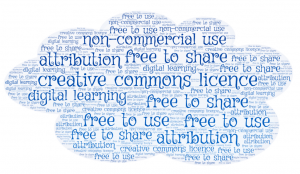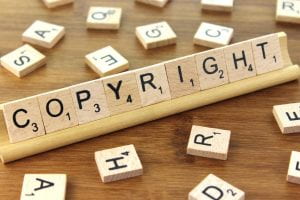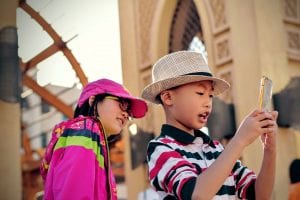This morning, I read the article “Recasting information literacy as a sociocultural practice: implications for library and information science researchers” by Anne Marie Lloyd. In this article, Lloyd suggests that rather than thinking about information literacy (IL) as a skills-based literacy, we should explore how IL can be used to construct meaningful learning in all contexts. This suggestion is based upon the findings of two studies which explore how emergency services officers in New South Wales, Australia use information as part of their training to either act or become a practitioner. The findings of the study helps to explain the way that the relationship with information changes when the learner moves from the epistemic mode of learning (text-based) toward the corporeal and social modalities (information obtained through experience and practical knowledge).
As a relatively new Masters student, this article resonated with me. At present, I am very much learning in the epistemic mode. I do not work in the context of a library or with other librarians and my learning is predominately text based. I often find it difficult to relate to what I am learning as I am learning it out of context. Lloyd suggests that IL learning is a sociocultural process which should not be limited to the epistemic mode only and I can certainly understand why. I wonder how much easier this course is for those who have some contextual understanding upon which to build their knowledge.
Lloyd’s article highlights the importance of teachers and TLs providing not only the epistemic mode of learning but also of providing opportunities for students to learn through the corporeal and social modalities in order to develop a holistic understanding of the concept or topic about which they are learning.
References
Lloyd, A. (2007). Recasting information literacy as sociocultural practice: Implications for library and information science researchers. Information Research, 12(4).

Image by Author
A mere short nine months ago, I began studying after a fifteen year break. One of my first tasks was to create a blog, which at first glance seemed simple. As it turns out, this task really challenged me, almost to the point where I pondered quitting my new journey before it had even really begun. Perhaps I would have, had it not been for the fact that I knew that if I were going to be the best teacher for my students, and hopefully one day a brilliant teacher librarian, then I would need to rise to this challenge, and the many many more that lay ahead of me.
Where to locate ‘free to use’ images
One of the first things I learnt about creating a blog was the importance of being able to find images that were freely available to use as well as how to credit these images on my blog. Websites such as Pixabay, Unsplash, and Google are some of my favourite places to find images and I hope to one day create some of my own too. What I hadn’t considered until today was that if I could locate images this way, that I could also locate music.
Where to find CC licensed music
Using the search function on the Smartcopying website, I was able to locate a webpage with links to where I could locate CC licensed music. Today, I thought I’d take a look at a platform called SoundCloud. This site provides access to a large collection or music, some of which can be freely used and shared. The user is able to create an account in which they can save music. One thing to note about this platform is that the user needs to ensure that they have adjusted the search filters to ensure that the music they are searching for is free to share, if that is the intention, because not all music on this site is free to share. Some other platforms which allow the sharing of CC licensed music include FMA (Free Music Archive), jamendo, and Audionautix, which allows you to search by genre.
There are, of course, many more platforms that provide CC materials in addition to the ones mentioned above however these are where I will begin my exploration and use.

Image: Nick Youngson CC BY-SA 3.0
This morning, my journey towards becoming a TL has taken me to the topic of Copyright. I was directed towards the Smartcopying website which is an essential resource to be aware of if you are a teacher or a TL. In particular, my focus today was exploring the use of film/DVD and how copyright applies to this. While I was reading up on my responsibilities regarding how to use film/DVD appropriately within my school context, I made a discovery.
As someone who likes to follow the rules, I was surprised to learn that I may have unknowingly breached the rules of copyright in regards to the use of DVD’s. As it turns out, it is not permitted to screen a video or DVD on the bus during and excursion which has been hired from a video shop by the school for the sole purpose of entertainment: AKA attempting to keep the students entertained for a short period of time on the very long bus ride from Brisbane to Canberra…and back! If the video or DVD is used for teaching purposes, or the bus company/school has obtained permission from the film’s copyright owner, then it is OK to use.
Since this is fairly standard practice among teachers, I began to wonder…
- Is it permitted to use the video or DVD purely for entertainment if they are purchased by the teacher rather than hired from a video store?
- Is it permitted to use the video or DVD purely for entertainment if they are streamed by the teacher rather than hired from a video store?
- Is it even appropriate to be screening videos and DVDs purely for the purpose of entertainment or should all viewing be done with the view of teaching and learning in mind?
After further reading, I discovered that some Australian schools are covered by the Co-Curricular Licence, which enables them to play films for non-educational purposes. This licence sits outside the Copyright Act (National Copyright Unit) and is negotiated individually by schools.
Copyright Law is not merely a guideline for fair use, it is, in fact, the law. As teachers and TLs, it is our responsibility to know about and follow Copyright Law. Furthermore, part of the role of the TL is to ensure that copyright information is shared with teachers and they they are aware of additional licences which have been budgeted for and purchased by the school
References
National Copyright Unit. (n.d.). Film and Video/DVD. Retrieved from http://www.smartcopying.edu.au/faqs/film-and-video-dvd
National Copyright Unit. (n.d.). Playing Films, Television and Radio in Schools. Retrieved from http://www.smartcopying.edu.au/information-sheets/schools/playing-films-television-and-radio-in-schools
In 2014 and 2015 respectively, ASLA (Australian School Library Association) (2015) released two documents outlining professional standards of the TL for the proficient and accomplished stages. These documents were in response to AITSL’s (Australian Institute for Teachers and School Leaders) set of professional standards which were published in 2011 and link to the Australian Teaching standards. It is suggested that these guidelines be used to assist TLs to meet the accreditation standards at each level.
As a classroom teacher, I am familiar with AITSL’s (2017) professional standards for teachers. Despite having worked as a teacher for almost fifteen years, these standards are very useful and provide me with a means to evaluate my professional practice as well as a guide for how I might improve my practice moving forward.
As someone who is at the beginning of my TL journey, the ASLA Evidence Guide (2015) is an invaluable tool to help me develop a greater understanding of the role of the TL. My knowledge is still very limited at this early stage and these standards clearly outline what types of skills and knowledge I should be demonstrating in my role as a TL. Furthermore, it provides examples of what this looks like from a practical sense. Once I am working as a TL, using these standards will help me to see what else I should be incorporating into my practice, what I am doing well and what I need to continue working on moving forward.
Maria L. O’Toole provides a useful example of how to collect and share this evidence through her weebly: School Library Portfolio. I really like the way that Maria has used a contemporary tool to share her learning and the clear and concise way in which she has organized the standards.
The ASLA Evidence Guide (2015) will be a very useful document for me beginning my TL career and help me to have a clear picture of my role and how to be conditionally improving my professional practice.
References
AITSL (2017). Australian Professional Standards for Teachers. Retrieved from https://www.aitsl.edu.au/teach/standards#!
Australian School Library Association (2015). Evidence guide for teacher librarians in the proficient career stage. Retrieved from https://interact2.csu.edu.au/bbcswebdav/pid-2798134-dt-content-rid-5542611_1/courses/S-ETL401_201930_W_D/ASLA%20evidence%20guide%20proficient%20career%20stage.pdf
O’Toole, M. L. (n.d). School Library Portfolio. Retrieved from http://otooleschoollibraryportfolio.weebly.com/

Photo by Tim Gouw on Unsplash
In Barbara Combes’ article (2009) ‘Generation Y: Are they really digital natives of more like digital refugees?’, she discusses the societal perception that all Generation Y and upwards are efficient users of technology.
She highlights findings from a study by Pew Internet & American Life Project which suggest that while teenagers feel comfortable using the Internet to locate information, they typically have limited knowledge or ability to use search engines to find information. I thought this was an interesting point and one that I could certainly relate to. Until recently, I had no idea about Boolean and proximity operators, or how truncation and wildcard operators worked. It also took me some time to figure out that each search engine has its own unique set of rules. It took me until I was at university to learn about these search strategies, and only then, it was out of necessity. The point that I make here, and also the point that Combes (2009) makes in her article is that just because someone hails from Generation Y does not mean that they are competent users of technology.
In her article, Combes’ (2009, p. 36) refers to the work of Scanlon (2009) who suggests that the so-called digital natives may actually be becoming digital refugees as they struggle to independently learn how to use modern technology. I have certainly felt frustration about being inept at using technology, however my knowledge of the inquiry process, combined with a genuine need to learn has helped me to persist at becoming a much more proficient user, and learner for that matter. This is also reflected in Combes’ article when she points out that one of the common characteristics of Generation Y technology users is that they pick and choose technologies to suit their need at the time (Combes, 2009, p 38).
Finally, Combes (2009, p 38) stresses the need for Generation Y to become proficient users of technology and suggests that if they cannot master the skills required to do this, they along with future generations, run the risk of becoming digital refuges like all generations before them.
References
Combes, B. (2009). Generation Y: Are they really digital natives or more like digital refugees? Synergy, 7(1), 31-40.
Scanlon, C. (2009) ‘The Natives Aren’t Quite so Restless’ in The Australian Higher Education Supplement. Retrieved from https://www.theaustralian.com.au/higher-education/opinion/the-natives-arent-quite-so-restless/news-story/a9f5d801fabb29f1673deb696a49e724



